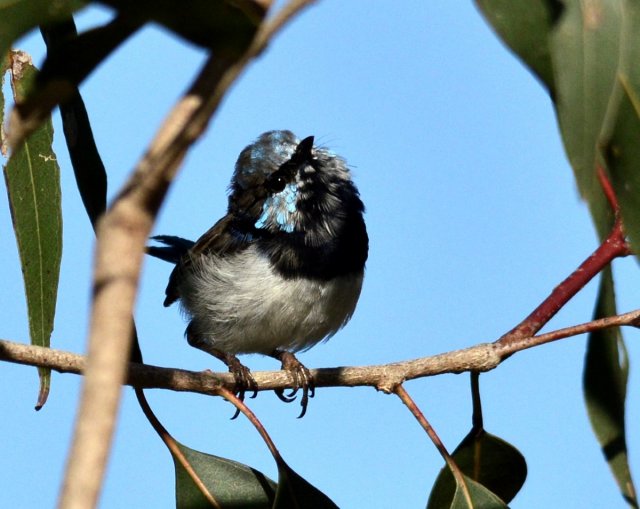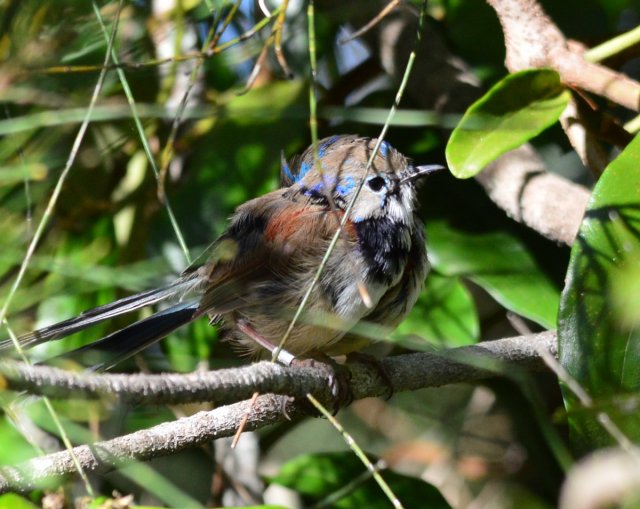With the cooler weather Eagleby Wetlands is again a birding paradise. Snapped 15 species on Friday morning in just under two hours. Caught these two - a Superb Fairy and a Variegated Fairy _ about 100 metres apart. Looks like they are both males undergoing colour change. The Superb is trying his hardest to look super cute.
| Term and Conditions | Privacy Statement | Web Support by Gaia Resources Hosted by Serversaurus |  |











Yes very cute ... possibly might also be males in moult where they lose their breeding colours in the off season, though might be a bit early for that.
Several male Superb Fairy Wrens well into eclipse plumage on the s.e. slopes of the Mt Lofty Ranges in SA.
Hi Woko and WD. In both cases there were males in full plumage nearby. I presumed that therefore these were juveniles. They also have that fluffy juvenile look. But ... I have been wrong before ... many times! Cheers, Muzz
If I remember rightly, at around 4 years of age male Superb Fairy Wrens retain their colourful plumage after breeding. From birth to 4 they adopt eclipse plumage. Something like that, anyway.
So cute, that first one loves the limelight.
elizabeth
I seem to recall reading somewhere that only the dominant male retains breeding plumage all year round.
I like the pose of the first photo
Ryu
Canberra
Aiming for DSLR-quality shots with a bridge camera
Stunning shots as always mate
Great to pixs of those little guys in that terrain
Dont take life too seriously, it never ends well
I can assure you that it is a male turning back into "eclipse" at this time of the breeding season. Although they look just the same going into the breeding plumage. As for the other male birds still in full breeding colours, the males older than 4 years can stay in colour all year round, while the younger males only retain their blue bills and tails.
M-L
Thanks Araminta and others. As a relative newby that helps me a lot to understand these common, and beautiful wrens. At present Red-backed, Superb and Variegated wrens are plentiful at my local wetlands so I really appreciate your insight into this eclipse phase. Cheers again. Muzz
It can all be a bit of an eye opener. Which is why bird watching is so intriguing. New Holland Honeyeaters are the most common bird at my place & yet I'd never realised until a few days ago that they have several white tufts of feathers around the face & neck. I'm wondering if those tufts serve any purpose such as trapping insects when the birds are hawking.